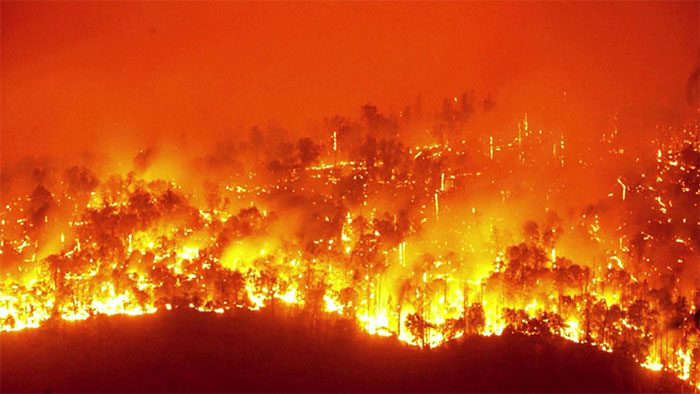The rampant cultivation of non-native plant species contributes to deadly wildfires, even in the cool, moist climates of Latin America.
In Chile, more than 130 people lost their lives in wildfires early in 2024 – marking the most devastating wildfire event in the nation’s history.
In Colombia, smoke from wildfires billowed just outside Bogotá in January, despite the city’s typically cool and humid weather.
And in Argentina, a wildfire ravaged a forest listed as a UNESCO World Heritage site.

These wildfires add to the devastation from record fires in the Amazon in October 2023. (Illustrative photo).
Francisco de la Barrera, an environmental scientist at the University of Concepción in Chile, believes that the fires result from a combination of a strong El Niño climate pattern, the prolific growth of non-native plant species, and climate change.
The Fiery Legacy of Climate Change
According to climatologist Maisa Rojas – Chile’s Minister of the Environment, the catastrophic fires have multiple causes, but climate change is one of the primary factors.
She noted that over the past decade, Chile has experienced 16 major wildfires, coinciding with “the highest temperatures recorded in the central region.”
Wenju Cai, a climatologist at the national science agency CSIRO in Melbourne, Australia, indicated that the extreme drought in this area in 2010 was one of the longest droughts in a millennium.
Climate change is also reducing cloud cover and shrinking glaciers in the Andes of Chile. This means less sunlight is reflected, resulting in rising temperatures.
Non-Native Species Also Fuel Devastating Fires
Humans have also provided ample fuel for wildfires by planting non-native trees with good intentions.
Dolors Armenteras, a biologist at the National University of Colombia in Bogotá, explained that in the 20th century, eucalyptus trees, native to Australia, were planted on the hills surrounding Bogotá to combat severe erosion. Eucalyptus was chosen for its rapid growth and adaptability to various conditions.
However, the large number of eucalyptus trees has produced a significant amount of flammable bark material.
Environmental scientist De la Barrera stated that non-native trees contribute to wildfires in Chile. According to the country’s Ministry of Agriculture, the area of planted forests in the Valparaíso region—where the deadly wildfire occurred in January—has doubled to over 41,000 hectares from 2006 to 2021. Eucalyptus trees account for nearly 40% of the forested area in Chile.
Tania Marisol González, a conservation ecologist at the Pontifical Javeriana University in Bogotá, remarked, “When I see the fire in Bogotá, it feels like I’m witnessing a chronicle of a foretold death.”
The “apocalyptic” fires are devastating the largest tropical wetland in the world.
Minister Rojas highlighted the potential to promote “biodiverse landscapes, with protected water sources and firebreak areas, especially at the urban-rural interface. This will reduce risks for both people and nature.”
However, a long journey lies ahead. De la Barrera warned that the steps proposed by Minister Rojas will require significant legal and regulatory changes.




















































